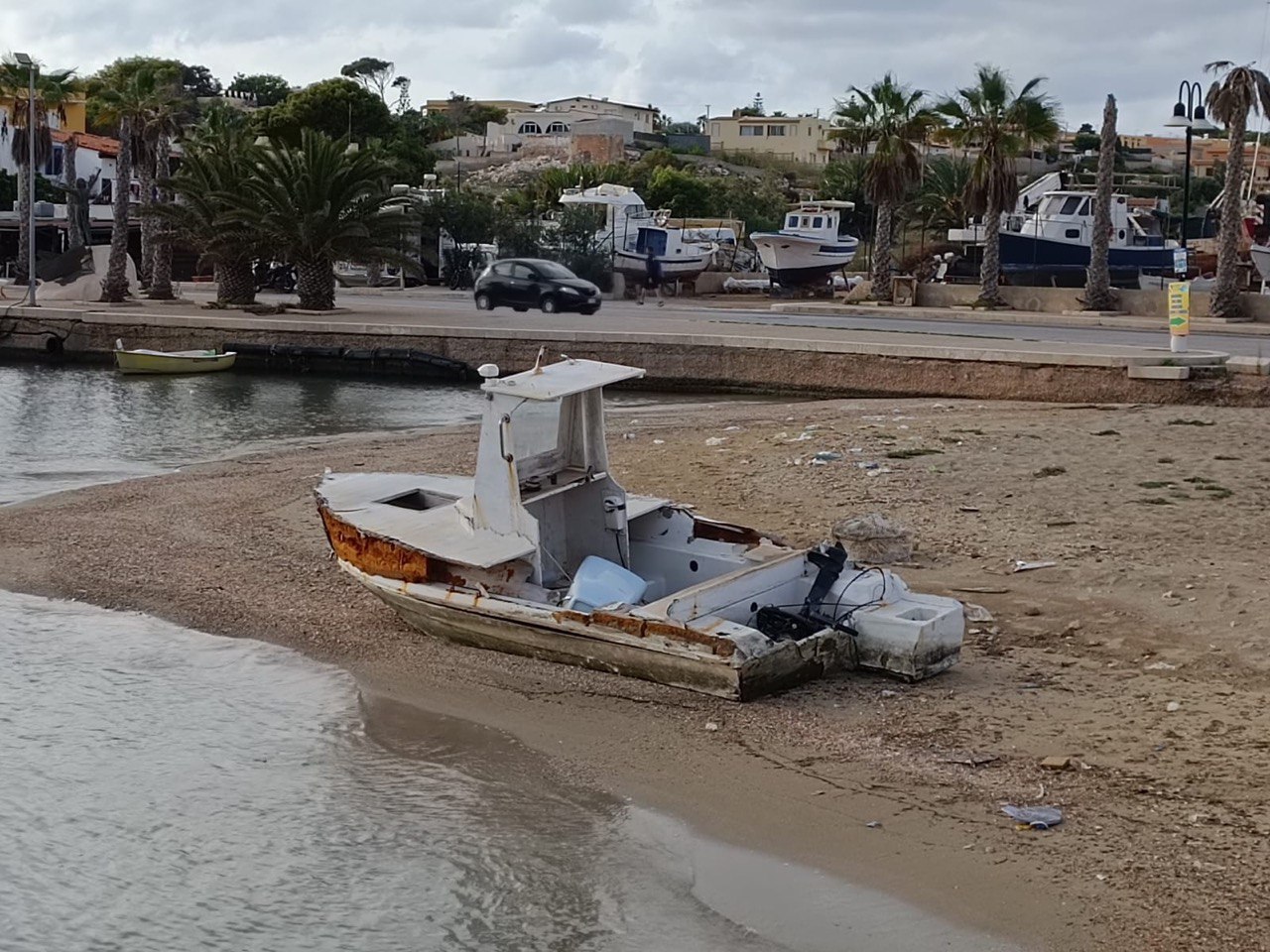On October 25th, VLPF participated in the event “Restoring Lampedusa Island“ in Lampedusa, a pilot action organized by the BlueMissionMed Italian HUB in collaboration with the Region of Sicily, the University of Palermo, and the Municipality of Lampedusa, within the framework of the European mission “Restore our Ocean and Waters.”
The event aimed to engage public and private organizations, as well as regional and local authorities, in implementing innovative solutions for environmental sustainability, starting from the island of Lampedusa.
One of the key topics discussed was the critical issue of boats used for illegal immigration, which are often abandoned in large numbers along the island’s coasts and ports.
These boats are so numerous that they pose a significant challenge in terms of management and disposal. This represents an environmental emergency that compounds the human tragedy faced by migrants risking their lives to cross the Mediterranean. As these boats deteriorate, they release micro-and macro-contaminants from resins, paints, and metals, severely impacting the marine ecosystem.
During the event, VLPF shared its expertise by presenting the results and methodologies of the Ghost Boat program. Through this initiative, VLPF aims to eliminate abandoned boats from the UNESCO World Heritage Site of Venice and its Lagoon, making a tangible contribution to the creation of a blue, circular, and sustainable economy that can be replicated and adapted in other regions of Italy and Europe.
The Ghost Boats program, initiated in cooperation with GEES RECYCLING in Aviano, can be described as a spin-off of the H2020 MAELSTROM project, which is currently concluding. The program is now independently and permanently operational in the Venice and Lagoon heritage site, where countless abandoned boats, primarily made of fiberglass, release highly polluting components such as microplastics, macroplastics, paints, and metals.
The program involves several operational phases, including mapping the boats (often abandoned in hard-to-reach locations), assessing their condition, removing them, and subsequently recycling the recovered materials using advanced mechanical processes.
Since the program’s inception in 2020, VLPF has recovered 31 abandoned boats, treating and delivering them to recycling centers, resulting in 12,040 kilograms of materials collected and recycled. The identification of these boats is facilitated by a dedicated app developed for the program, which allows for the identification and removal of vessels. Their recovery is carried out using specially equipped barges, which also transport the boats to recycling centers where metal and plastic components are processed.
Recently, this identification and recovery process has been complemented by the sampling of sediments, water, and soil in contact with Ghost Boats. In collaboration with the Montani Technical and Technological Institute in Fermo, VLPF has analyzed these samples to assess the presence of toxic elements, micro-contaminants, and microplastics.
We have demonstrated that the recovery and valorization of abandoned boats is achievable. This approach serves as a powerful lever to promote a sustainable and circular economic model, offering significant interest and vast untapped potential at the European level to restore and preserve the integrity of our marine ecosystems and inland waters.
